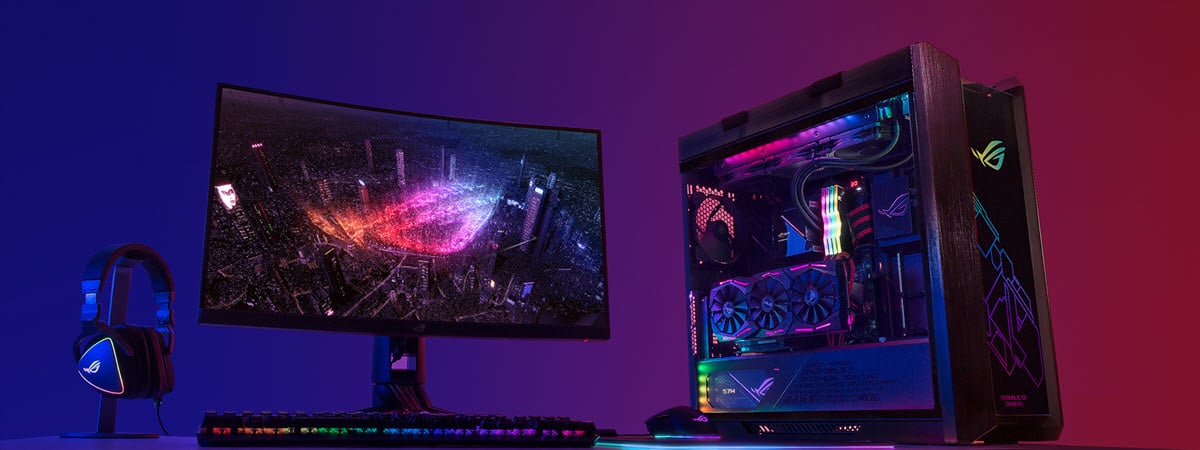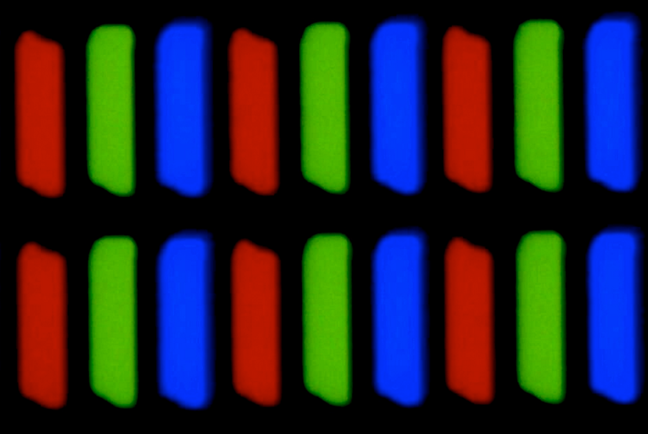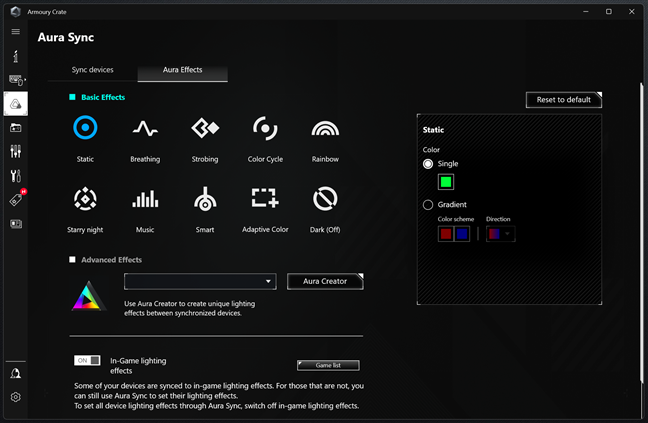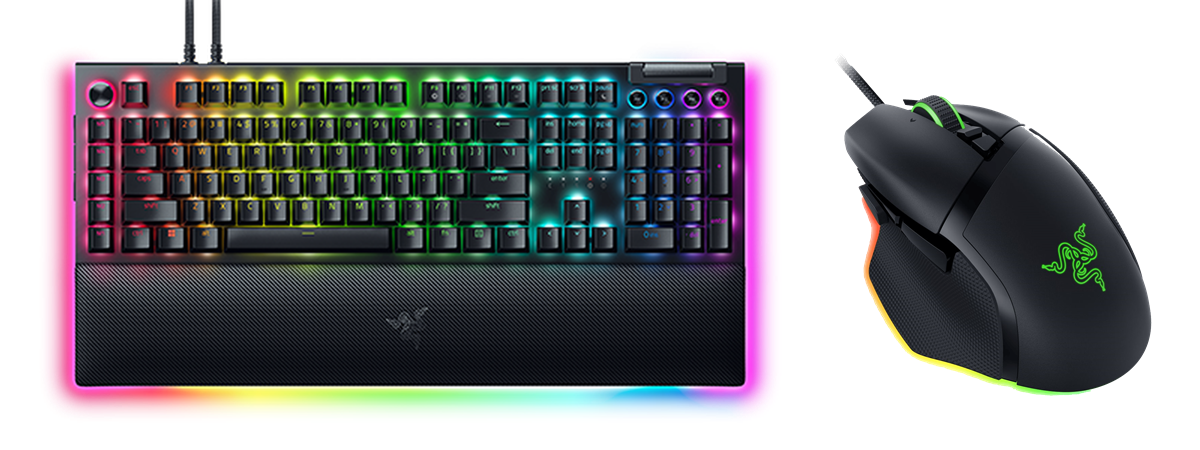
If you have ever used a gaming computer, image editing applications, or a graphic tablet for creating illustrations, it is impossible for you not to have met with the term RGB. Are you curious about the meaning behind RGB, its applications, or the reason why it frequently pops up in discussions about computers, gadgets, or displays? In this article, I’ll try to make this all a bit clearer for you. So, if you want to find out what RGB is, which are the most common ways in which it is used, and why, read on:
What is RGB, what’s its meaning, and what does RGB stand for?
The definition of RGB is found in its name, which is an acronym: RGB stands for “Red Green Blue.” As you’ve guessed, this isn’t slang but a term that refers to colors and how colors are composed. Why red, green, and blue, you might ask? The answer is that red, green, and blue are primary colors that can be combined in various amounts to get any other color from the visible spectrum that the human eye can see.
RGB is an additive color model. In other words, to get other colors, you add and mix the primary red, green, and blue colors. Mix all three colors at their maximum intensity (100%), and you get white. On the other hand, if you mix all of them at their minimum intensity (0%), you get black.

The RGB color model
In simpler terms, if you mix equal parts of 100% red, green, and blue, you get light, and if you mix 0% red, green, and blue, you get darkness.
RGB can also be considered the opposite of CMY, which stands for “Cyan Magenta Yellow.” Why the opposite? CMY is the antithesis of RGB as a color model: combining cyan, magenta, and yellow at 100% maximum intensity gives you black, while 0% minimum intensity gives you white.

The CMY color model
Where is RGB used?
First of all, the RGB color model is used in devices that work with colors. Since it is an additive color model that outputs lighter colors when the three primary mixed colors (red, green, blue) are more saturated, RGB is best suited for emissive image display. In other words, the RGB color model is best suited for illuminated screens, such as those used by TVs, computers, laptops, smartphones, and tablets.
In comparison, CMYK, which stands for “Cyan Magenta Yellow Key (Black)” and derives from CMY, is a reflective color model. Its colors are reflected rather than illuminated, so it’s better suited for printing. That’s why, when calibrating a printer, you work with the CMY color space, and when calibrating a computer display, you work with RGB.

Printers are using the CMYK color model
Besides TVs and other electronic displays, the RGB color model is also used in other devices that work with illuminated colors, like scanners or photo and video cameras.
For example, LCD screens are made of many pixels that form their surface. Each of those pixels is usually made of three different light sources, and each of them can turn red, green, or blue. If you look closely at an LCD screen using a magnifying glass, you can see these small light sources that form pixels. However, when you are looking at it like a normal person would, without a magnifying glass, you only see the colors emitted by those tiny light sources in the pixels. By combining red, green, and blue, and by adjusting their luminance, the pixels can make any color.

RGB light sources of the pixels on a screen
RGB is also the most widely used color model in software. To be able to specify a certain color, the RGB color model is described by three numbers, each of the numbers representing the intensity of red, green, and blue colors. However, the ranges of the three numbers can differ depending on your reference. Standard RGB notations can use triplets of values from 0 to 255, some can use arithmetic values from 0.0 to 1.0, and some can use percentage values from 0% to 100%.
For instance, if the RGB colors are represented by 8 bits each, it would mean that the range of each color can go from 0 to 255, 0 being the lowest intensity of a color and 255 the highest one. Using this notation system, RGB (0, 0, 0) would mean black, and RGB (255, 255, 255) would mean white. Also, the purest red would be RGB (255, 0, 0), the purest green would be RGB (0, 255, 0), and the purest blue would be RGB (0, 0, 255).

Representing RGB colors in an 8-bit notation, each color with a range from 0 to 255
I didn’t choose this example by chance: RGB is often represented in software by an 8-bit per channel notation. If you’re wondering why 255 is the maximum value in the 8-bit notation, that’s because each color is represented by 8 bits. A bit can have two values: 0 or 1. Raise 2 (the number of values of a bit) to the power of 8 (the number of bits assigned for each color), and you get 256, which is the exact number of numbers from 0 to 255. Geeky, right? 🙂
However, other notations are also commonly used, such as 16-bit per channel or 24-bit per channel notations. In 16-bit, for example, the range of values for each RGB color goes from 0 to 65535, while in 24-bit notation, they go from 0 to 16777215. The 24-bit notation covers 16 million colors, which is more than all the colors visible to the human eye, which tops at about 10 million.
Welcome to the rainbow of RGB lighting
From software to hardware, RGB is all over, and one of the most trendy ways of using RGB in the modern world is RGB lighting. I’m talking about using RGB LEDs to light up not just your screen but the back of your monitor, TV, gaming accessories (such as keyboards and mice), motherboard, graphics card, PC case, processor cooler, fans, and even gaming chairs!
RGB lighting has pushed its way into a huge array of devices and even some furniture. Although some people think it’s silly, others think it’s cool. Whether you like rainbows or prefer to light up everything in a single color, RGB lets you do it.

An RGB lit gaming computer
But how does RGB lighting work? The answer is simpler than you might think, and it all relates to the RGB meaning: Red Green Blue. Essentially, all RGB-lit devices and fixtures have strips or bundles of RGB LEDs. An RGB LED is a combination of three differently colored LEDs, all put together: one Red LED, one Green LED, and one Blue LED.

A closeup of an RGB LED taken from Wikipedia
By combining the three LEDs and mixing their color intensity and luminance, you can get almost any color you want—that is, if you don't look at the LEDs too closely.
What is RGB in gaming?
Maybe the best implementation of RGB lighting is the one we see increasingly more often in gaming computers, one that answers the question “Why do gamers like RGB?”: RGB components for computers can usually be controlled by software, which means that you customize and adapt lighting effects as you wish. Such an example is Windows 11’s Dynamic Lighting feature, which lets you sync the lighting effects of all your RGB-enabled computer components, peripherals, and accessories.

Windows 11’s Dynamic Lighting allows you to adjust RGB lighting effects and settings
Manufacturer-made software like Razer Synapse and ASUS Armoury Crate offer even more complex RGB controls, such as dynamic in-game lighting effects that enhance gaming experiences by responding to your actions in real-time.
Razer Synapse, for example, allows users to enable or disable custom Chroma lighting effects for games and applications, providing an immersive environment.

Chroma Studio in Razer Synapse
Similarly, ASUS Armoury Crate supports Aura Sync, which enables in-game lighting effects for Aura-ready games, allowing for a synchronized and thematic ambiance. These advanced features work together to deliver a more personalized gaming setup.

Aura Effects in ASUS Armoury Crate
Either way, once you have gone the RGB way, you’ll probably love it, thanks to the amount of personalization you get.
Does RGB lighting affect the performance of your computer?
The impact on performance is negligible since the computer's resources, such as the CPU and RAM, are only minimally used. Nevertheless, the software that manages RGB lighting does have certain requirements, but only a tiny fraction of those are used for RGB lighting. The largest part is going to the integration and customization of the other features and functions of your hardware rather than to the RGB systems.

RGB's impact on performance is negligible
Similarly, components with RGB lighting add to the system’s power consumption, albeit marginally. This slight increase in power usage can result in a minor heat elevation within the system.
Do you have other questions regarding RGB?
This was just a brief explanation of what RGB is and what it is used for. It is a complex subject with complex ramifications in many technologies and industries, both related to hardware and software. Thus, I’m pretty sure you might have some additional questions about RGB. If you do, ask away in the comments section below, and I promise to do my best to help you figure out the answers.


 22.04.2024
22.04.2024 


